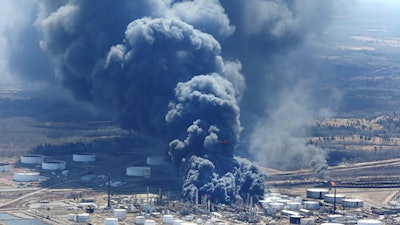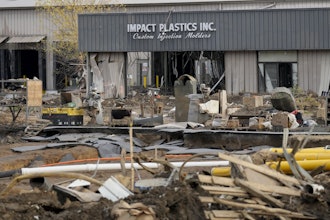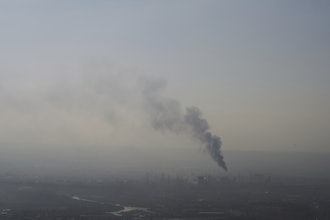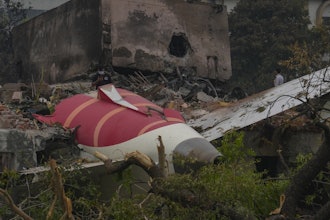
The U.S. Chemical Safety and Hazard Investigation Board (CSB) faces a potential shutdown after the Trump administration proposed to eliminate its funding in the 2026 budget request.
The CSB, which began operating in 1998, investigates hazards and incidents that result, or may result, in the release of hazardous substances. The board also recommends preventive or mitigative actions and conducts studies on chemical hazards but does not issue fines or citations.
According to the CSB, it operates on an annual budget of $14.4 million and employs fewer than 50 people. It has reportedly investigated nearly 180 major chemical incidents that have resulted in over 200 deaths, 1,300 serious injuries and billions of dollars in damage to facilities, homes and the environment.
The Trump administration argues that the CSB “duplicates” the EPA’s and OSHA’s capabilities to “investigate chemical-related mishaps.” The budget request also stated that the board generates “unprompted studies” of the chemical industry.
President Trump’s budget would cease funding for the CSB with the expectation that it begins shuttering operations during Fiscal Year 2025. An emergency fund of nearly $844,000 would cover expenses related to the shut down.
Trump attempted to defund the board three times during his first term, but Congress voted to continue support each time.
In this Q&A with Manufacturing.net, Kristi Hames, chemical safety expert and industrial hygienist at software developer VelocityEHS, criticized the proposal, arguing that the Trump administration mischaracterized the CSB’s purpose.
Hames also warned that eliminating the board could lead to a rise in preventable incidents in the chemical manufacturing sector.
Nolan Beilstein (NB): The White House said in its 2026 budget request that the CSB duplicates the capabilities of the EPA and OSHA. Do you think this is an accurate description of the board?
Kristi Hames (KH): No, that’s a mischaracterization. While the EPA and OSHA have enforcement roles, the CSB’s mission is fundamentally different.
The Chemical Safety Board is an independent, non-regulatory agency that investigates chemical incidents not to assign blame or levy fines, but to understand and communicate root causes. That independence creates an environment where workers and employers alike are more willing to share information, enabling deeper insights into systemic failures.
Unlike OSHA or EPA, the CSB’s work doesn’t stop at the investigation—it extends to wide public dissemination of lessons learned. The board publishes detailed final reports, root cause diagrams and powerful animated videos that make complex failures understandable to everyone from frontline workers to executives.
Companies use these resources in safety training, toolbox talks, management-of-change reviews and process hazard analyses. In many cases, firms outside the incident scope use CSB findings to proactively redesign processes or enhance safety protocol long before regulators step in.
The CSB’s value lies in making hard-won insights accessible, educational and actionable—not in duplicating enforcement. Their work adds a layer of transparency and learning that no other agency provides.
NB: The budget request says the board generates “unprompted studies” of the chemicals industry. Although the board does not issue citations or fines, how would you explain the board’s relevance to those who question its purpose?
KH: The CSB’s so-called “unprompted studies” are exactly what makes it invaluable. These investigations uncover systemic risks and operational blind spots that often precede enforcement action—or tragedy.
By not being tied to punitive outcomes, the CSB is able to share unbiased, technical root cause analyses that resonate across industry sectors and geographies.
Their findings frequently shape voluntary industry standards, corporate practices and even OSHA and EPA rulemaking. That kind of catalytic influence can't be replicated by enforcement agencies alone.
NB: Could the EPA and OSHA realistically absorb the CSB’s responsibilities?
KH: Not without a major overhaul of their current mandates and staffing. EPA and OSHA already face resource constraints, and their responsibilities are broad.
The level of technical detail and root cause analysis the CSB brings would require dedicated, interdisciplinary teams that would include engineers, chemical safety experts and process safety specialists who would be focused solely on incident investigation.
More importantly, it would require a cultural shift from enforcement to education, which isn’t how those agencies are structured today.
NB: What unique operations would be lost if the CSB shuts down?
KH: We would lose an independent, science-driven watchdog that reports without bias or political interference. The CSB’s video reenactments and final reports are often used in safety training worldwide.
We’d also lose a national repository of incident lessons that is both accessible and trustworthy.
Perhaps most importantly, we’d lose a mechanism for uncovering hidden risks—especially in facilities that don’t attract regulatory scrutiny but still operate hazardous chemical processes.
NB: If the CSB is defunded, what would the chemical manufacturing landscape look like in five years?
KH: You’d likely see a rise in preventable incidents, especially low-frequency, high-impact events, because no other agency provides the same proactive, systems-level scrutiny.
Without the CSB’s independent lens, risk insights would become fragmented and reactive. Workers may face greater exposure to hazards that go undetected until an accident occurs.
Over time, the absence of a unifying investigative voice could erode public trust and stall safety innovation across the industry.
For environment, health and safety (EHS) professionals, it would mean losing one of the few sources of actionable, unbiased insights not tied to enforcement or liability concerns.






















